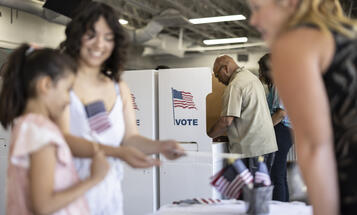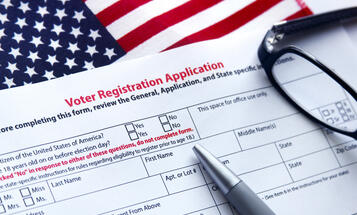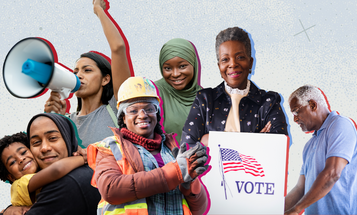
The Success and Potential of the National Voter Registration Act
The National Voter Registration Act set the first ever national standards for mail-in registration and increased the number of places people could register to vote, including motor vehicle and public assistance offices.
A new report from Demos, Registering Millions: The Success and Potential of the National Voter Registration Act at 20 highlights the impact the National Voter Registration Act has had over the past twenty years. It may seem unthinkable now, but as late as the 1980s, people in several states had to go to a central registrar’s office just to register to vote. The NVRA changed the landscape and opened access to registration. Among its many provisions, it set the first ever national standards for mail-in registration and increased the number of places people could register to vote, including motor vehicle and public assistance offices.
In many ways, the law has been a major success. Millions of Americans have registered or re-registered every year at NVRA designated locations (click to enlarge).
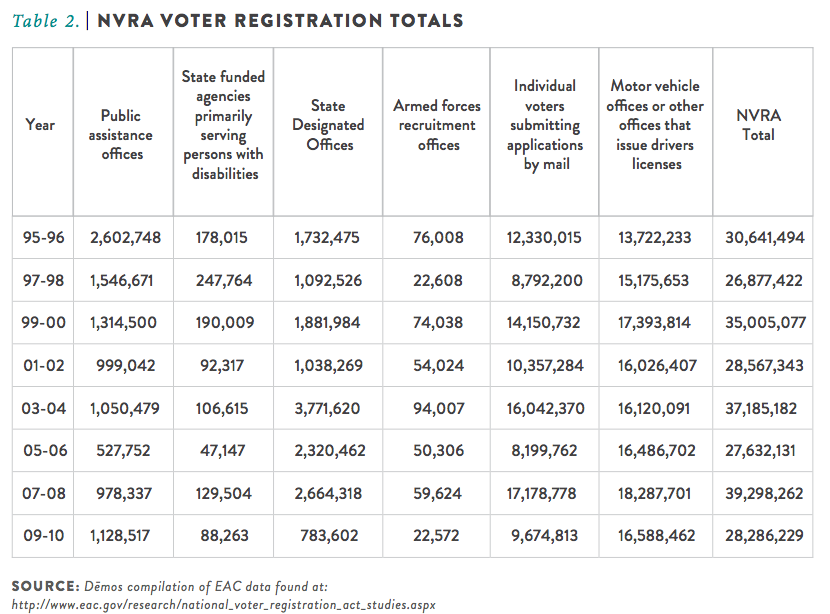
Yet, a stubborn registration gap exists between low and high income voters. As the graph below shows, while registration rates among the lowest income quintile are rising, they still remain far below the rates of the mid and high income quintiles:
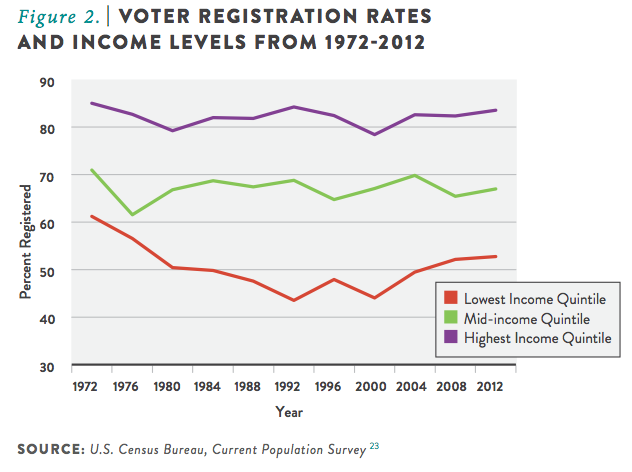
Source: U.S. Census Bureau, Current Population Survey
Part of the gap could be due to poor enforcement and oversight of NVRA provisions at the state level. Demos and its partners have been working have been working with state officials to properly implement Section 7 of the NVRA, which requires that voter registration services be available to applicants and recipients of public assistance benefits. Through this work, over 1.8 million additional eligible voters have been registered.
In the chart below, the first column is the number of voters projected to apply for voter registration at public assistance offices, had there been no intervention to increase enforcement of Section 7 requirements. The second column is the number of eligible voters that actually applied to register after Demos and its partners took action. The last column shows the net impact that enforcement of Section 7 has had in terms of increasing voter registration applications through public assistance offices.
|
State |
Pre-Reform Projected |
Post Reform, Actual |
Intervention Impact* |
|
Georgia |
19,747 |
62,706 |
42,959 |
|
Illinois |
32,706 |
368,576 |
335,870 |
|
Indiana |
7,512 |
67,224 |
59,712 |
|
Massachusetts* |
|
|
31,453 |
|
Michigan |
10,709 |
13,080 |
2,371 |
|
Mississippi |
5,315 |
103,288 |
97,973 |
|
Missouri |
47,128 |
519,148 |
472,020 |
|
New Mexico |
2,144 |
52,013 |
49,869 |
|
North Carolina |
51,952 |
228,229 |
176,277 |
|
Ohio |
78,197 |
567,633 |
489,436 |
|
Pennsylvania |
1,567 |
14,399 |
12,832 |
|
Virginia |
35,882 |
85,744 |
49,862 |
|
Total |
292,860 |
2,082,040 |
1,820,633 |
Bringing more voices into the political systems makes our democracy stronger. As Demos highlighted in its report, "Stacked Deck," our politics and policies are dominated by corporate and affluent interests. Voting is our great equalizer. If more diverse voices vote, the dominance of money could diminish.
Despite continued attacks and challenges, the NVRA has successfully registered millions of eligible voters. We must continue to protect and expand the freedom to vote. Looking forward, modernizing and expanding the NVRA, along with other voter registration reforms, will help eliminate registration gaps between communities and bring more voices into our political process.
